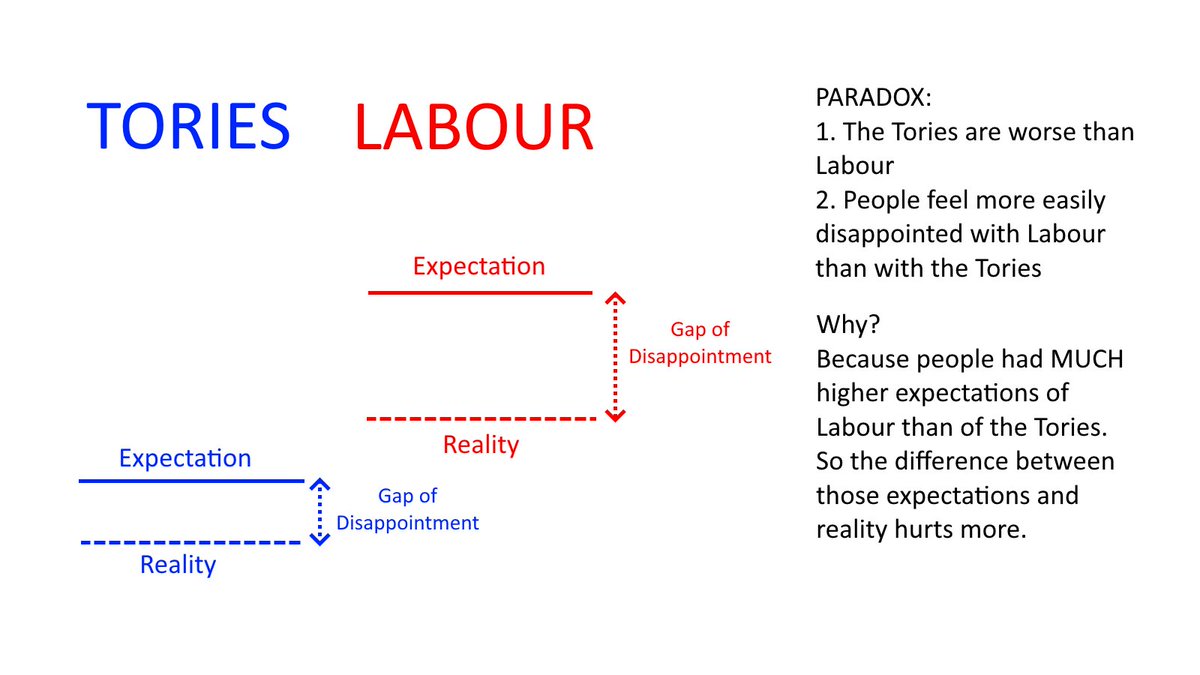[THREAD]
You may well be familiar with the UK Government's coronavirus dashboard, the main website they use to report data on a daily basis for the whole of the UK.
What you may not realise is that almost nothing you see on the summary page is accurate.
coronavirus.data.gov.uk
You may well be familiar with the UK Government's coronavirus dashboard, the main website they use to report data on a daily basis for the whole of the UK.
What you may not realise is that almost nothing you see on the summary page is accurate.
coronavirus.data.gov.uk
There are a wide range of reasons for the data being incorrect or out of date. Combined, the result is that almost everything you see on that first page underplays the severity of the pandemic.
The first thing is, all graphs are 7-day averages, not actual value graphs.
The first thing is, all graphs are 7-day averages, not actual value graphs.
Secondly, summary Testing data includes some people who have been tested to see if they had COVID-19 in the past.
You need "Tests processed by Pillar" (Pillars 1 and 2) on the detailed Testing page to see number of currently infected people being tested.
coronavirus.data.gov.uk/testing
You need "Tests processed by Pillar" (Pillars 1 and 2) on the detailed Testing page to see number of currently infected people being tested.
coronavirus.data.gov.uk/testing
Cases are worse.
Firstly, the 7-day average really blunts the impact of any spike.
Secondly, the graph on the summary page is based on when the results of the tests were made available, not on when the test samples were collected from people.
Firstly, the 7-day average really blunts the impact of any spike.
Secondly, the graph on the summary page is based on when the results of the tests were made available, not on when the test samples were collected from people.
To get a more accurate view of how the number of cases is growing, you need to look at the "Cases by specimen date" graph on the detailed Cases page.
That shows you positive test results, based on the dates that the test samples were actually taken.
coronavirus.data.gov.uk/cases
That shows you positive test results, based on the dates that the test samples were actually taken.
coronavirus.data.gov.uk/cases
The Healthcare summary can be wildly out of date, because the UK Government only report dates that have data for all 4 nations available. But in some instances, one or other nation - usually Scotland, it has to be said - can be many days (sometimes even weeks) in reporting.
So you need to look at the detailed Healthcare page to see the most up to date data.
It will show you that for example although the summary page said 324 people were admitted to hospital, the real figure was 448. (Excluding Scotland's missing figure.)
coronavirus.data.gov.uk/healthcare
It will show you that for example although the summary page said 324 people were admitted to hospital, the real figure was 448. (Excluding Scotland's missing figure.)
coronavirus.data.gov.uk/healthcare
Similarly, patients in hospital are stated on the summary page as 2,428. The real number is 2,481. (Excluding Northern Ireland's missing figure.)
The Deaths summary is inaccurate as well.
Deaths are displayed based on the date they are reported to the public. But in some cases that can be weeks after the deaths actually occurred.
To see real day-to-day evolution, you need the "date of death" data.
coronavirus.data.gov.uk/deaths
Deaths are displayed based on the date they are reported to the public. But in some cases that can be weeks after the deaths actually occurred.
To see real day-to-day evolution, you need the "date of death" data.
coronavirus.data.gov.uk/deaths
In short: if all you're doing is glancing at the summary page once a day, you're getting a skewed (and ultimately more rosy) view of the pandemic.
Every single decision as to how to massage the data seems to have been taken with a view to minimising any increase.
Every single decision as to how to massage the data seems to have been taken with a view to minimising any increase.
But the real (ok, "more real") figures are available. You just have to put in a bit more effort and dig a bit.
Go to the detail pages (Testing, Cases, Healthcare, Deaths) and download the data into a spreadsheet. That's the only way to see the most up to date info.
/ENDS
Go to the detail pages (Testing, Cases, Healthcare, Deaths) and download the data into a spreadsheet. That's the only way to see the most up to date info.
/ENDS
• • •
Missing some Tweet in this thread? You can try to
force a refresh









